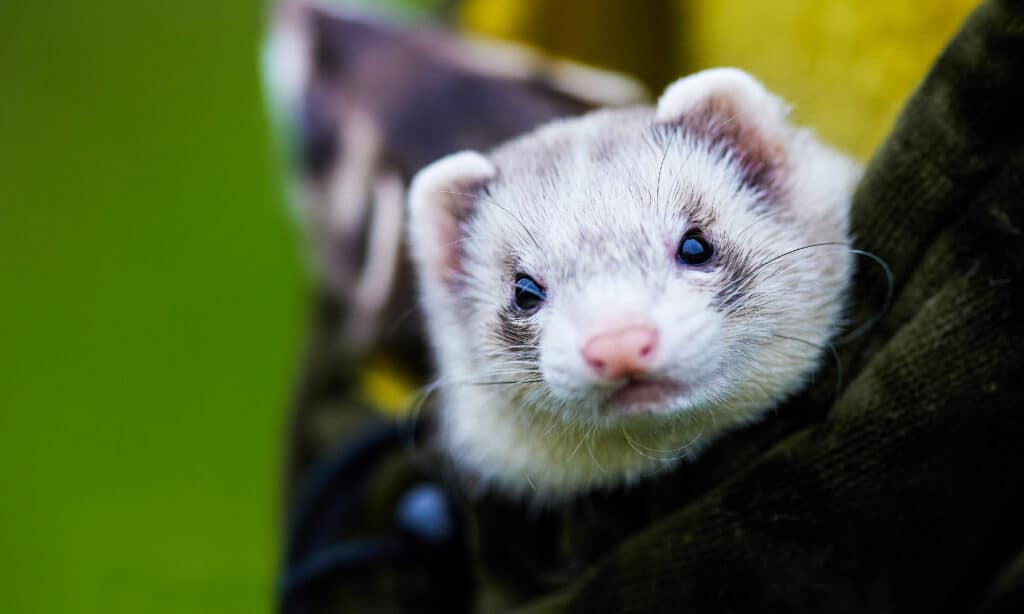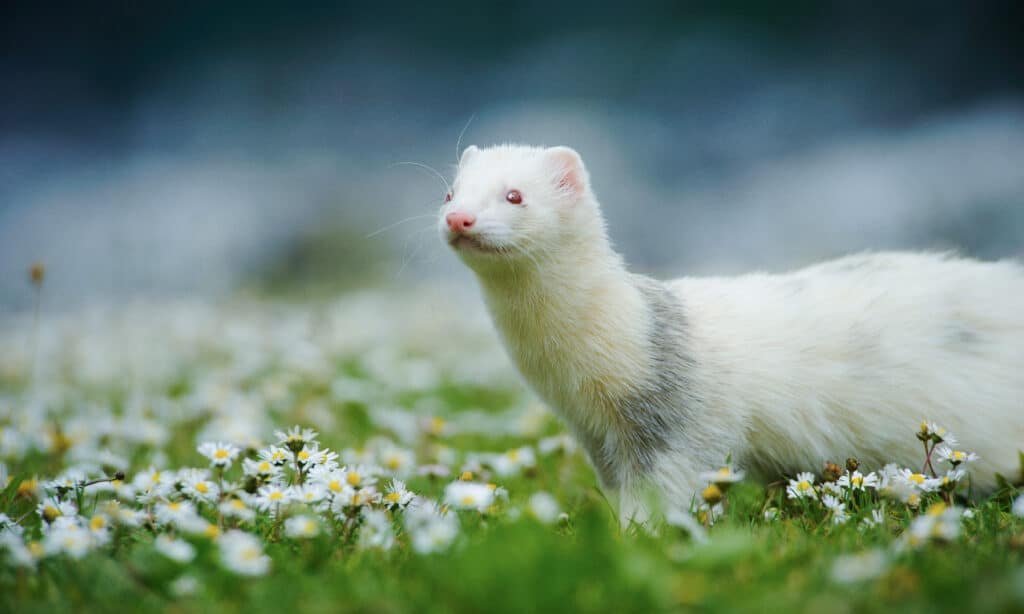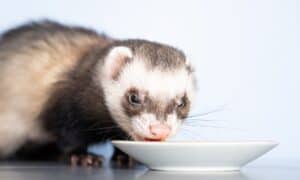Ferrets (Mustela furo) are domestic members of the weasel family that have been companions to humans for over 2,000 years. These strange little critters live for about five to seven years on average and make wonderful pets for the people who know how to care for them. Ferrets belong to the family Mustelidae. Their most likely ancestors are European polecats (Mustela putorius). These sweet mammals have long, slender bodies and weigh between 1.5 and 4.4 pounds on average. Before you consider adopting a ferret, there are a few things you should know. Ferrets have some very special needs in order to survive and thrive. For example, did you know that a large percentage of female ferrets (jills) die if they don’t breed? Let’s talk about that.
Why do Female Ferrets Die if They Don’t Breed?

The VCA Animal Hospital recommends spaying all female ferrets that won’t be bred at every heat cycle. The current age recommendation is to spay at 4-6 months of age.
©Julie Gaia/Shutterstock.com
Do you know what an induced ovulator is? Ferrets, cats, rabbits, and camels are all induced ovulators, which means that the act of breeding triggers the ovaries to release ovarian follicles. What does this mean? In ferrets, it means that an unbred jill must ovulate or she will continue to produce high levels of estrogen. When a ferret has continuously high levels of estrogen in her blood, she can develop a condition called hyperestrogenemia (or hyperestrogenism). Female ferrets are very susceptible to the side effects of high blood estrogen. This can cause her bone marrow to stop producing blood cells. This leads to low counts in red and white blood cells and limited platelet production.
A low blood cell count eventually leads to anemia, which is described as a “deficiency of red blood cells in circulation”. Jills are very prone to developing aplastic anemia and pyometra, which can both be fatal. To put it simply, female ferrets stay in heat until they breed. Staying in heat for any extended period of time often results in the development of fatal conditions.
According to one veterinary resource, about 30 percent of unmated jills in season will die if they cannot breed.
Signs and Symptoms

Ferrets have extended heat cycles that last around five months.
©everydoghasastory/Shutterstock.com
A jill is in heat (or in season) constantly for about five months. If they have not bred by the end of their season, they are at risk of short and long-term health risks. Male ferrets (hobs) face no such health risks from not breeding. There are a few side effects to look for in your unspayed female ferrets.
- Pale gums
- Signs of persistent estrus, such as vulvar discharge and a swollen vulva
- Increased respiratory rate
- Weakness
- Tachycardia
- Lethargy
- Depression
- Reduction in appetite
- Hemorrhaging on the gums
- Hair loss
These are not the only symptoms and you should talk to your local small animal vet if you have concerns regarding your ferret. The first thing you should look for if your ferret is acting unwell is a paleness in the gums. This is usually indicative of some kind of problem or illness.
What Should I Do to Avoid This?
In North America, most ferret owners have nothing to worry about. Most ferrets are spayed or neutered before they are adopted. For unspayed female ferrets, there are a few things you can do. The most effective solution is to ensure that your ferret is spayed before she reaches sexual maturity – around 6-12 months of age. There are several benefits to spaying and neutering your ferrets, such as preventing unwanted litters and reducing the risk of anemic death in jills. Some ferret owners do not like to spay or neuter their ferrets because of the increased risk of Cushing’s Disease.
There are a couple of other treatment options outside of spaying, which all include bringing your female ferret out of season.
- Breed your female ferret with an unaltered male: We cannot expressly recommend that you do this. Breeding two unaltered ferrets can, of course, result in the female ferret giving birth. Hobs are also quite aggressive in their mating behaviors and can injure jills. Unless you are a knowledgeable and ethical expert on ferrets and ferret breeding, you should not take this course of action.
- Breed your female ferret with an altered male: This is another course of action that we cannot expressly recommend due to the aggressive mating behavior of hobs. This is a fairly common and affordable practice, in which the hob receives a vasectomy and is still able to mate. Mating without viable sperm still brings a jill out of season.
- Hormone injections: You can treat your jill with a hormone injection right before her season starts. These hormonal injections are usually made up of pregnancy hormones such as progesterone. The shot, known as a “jill jab”, will trick the female ferret’s body into thinking she’s pregnant. This will effectively end her breeding season.
- Hormone implants: Hormone implants are available for both male and female ferrets. However, they are licensed only for use in males. In males, this slow-release implant is a capsule placed under the skin while the ferret is sedated. It acts to chemically neuter the hob for a certain period of time. In jills, the same implant stops the season from occurring.
Summary

Make sure to look out for the health of your ferret and talk to a professional if you have any concerns.
©iStock.com/Tatyana Consaul
About 30 percent of unspayed female ferrets will die from hormonal complications due to their breeding cycles. These complications are always life-threatening, at the very least, and include anemia and pyometra. You can prevent this by spaying your female ferret, breeding her with a vasectomized male ferret, or giving her hormone treatments. If you have any worries or concerns about the health of your female ferret, make sure to talk to a small animal vet or other professional to ensure the proper treatment.
The photo featured at the top of this post is © Couperfield/Shutterstock.com
Thank you for reading! Have some feedback for us? Contact the AZ Animals editorial team.







